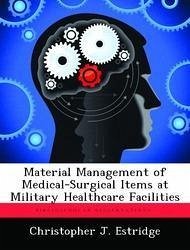This research examined whether certain military healthcare facility characteristics could be used as determinants in setting materials management policies. Cost efficiency in the military healthcare system is as important as it is in the civil sector, which has led to an increased emphasis on material management policies and a drive toward stockless inventory practices. The benefits (success) of stockless inventory policies in the civil sector have been mixed. In the early to mid 90's, stockless inventory systems were the end-all solution. They have since faded with many organizations settling on a blend of stockless and traditional inventory practices. Air Force healthcare facilities currently use a Days of Stock inventory policy with defaults set for operating level and safety levels based on source of supply. The material management policies at Air Force healthcare are relatively static with a one-size-fits-all approach, although they vary by size and operation. This study examined the total relevant inventory costs of the (Q,s), (s,S), and stockless inventory policies available in the Defense Supply Center-Philadelphia Medical-Surgical Prime Vendor contract in use at Air Force healthcare facilities located within the continental United States. Further, quantitative approaches analyzed current and past acquisition data to draw conclusions on the best cost minimizing inventory policy based on factors such as number of personnel, number of beds, number of bed days, relative value units, relative weighted products, admissions, and enrolled population. The results show that workload factors such as relative value units and relative weighted products can be used to predict an appropriate least cost inventory policy for individual healthcare facilities.
Hinweis: Dieser Artikel kann nur an eine deutsche Lieferadresse ausgeliefert werden.
Hinweis: Dieser Artikel kann nur an eine deutsche Lieferadresse ausgeliefert werden.








